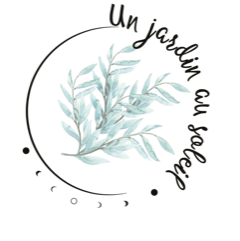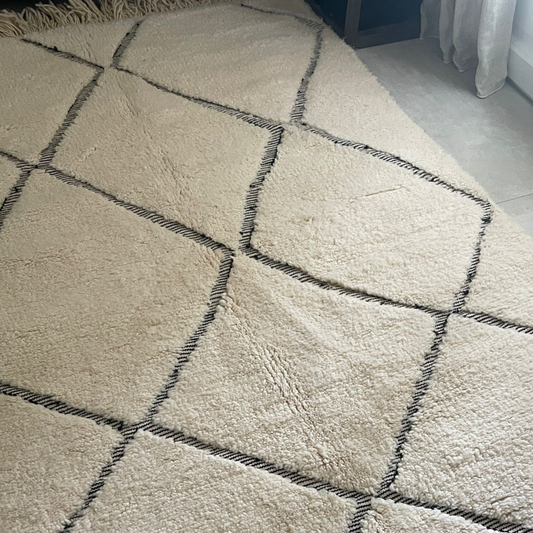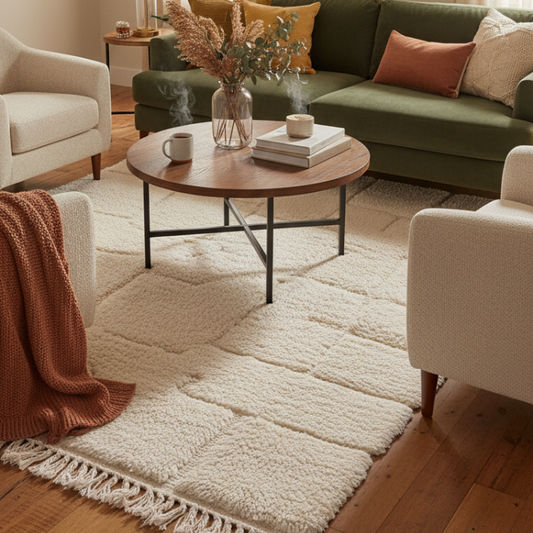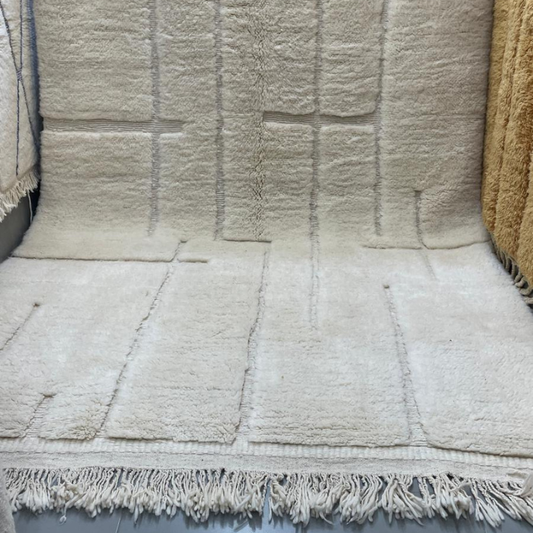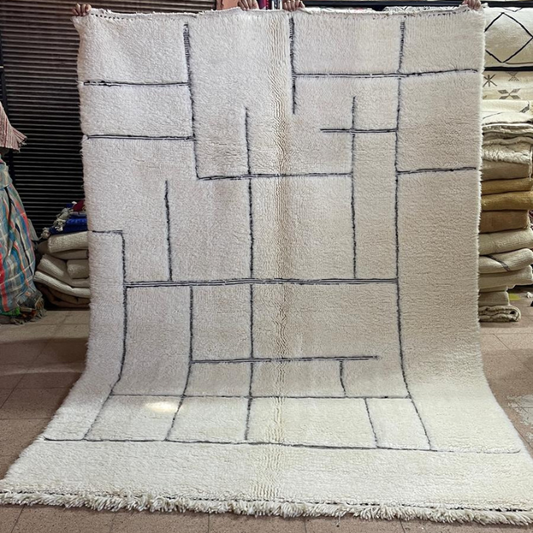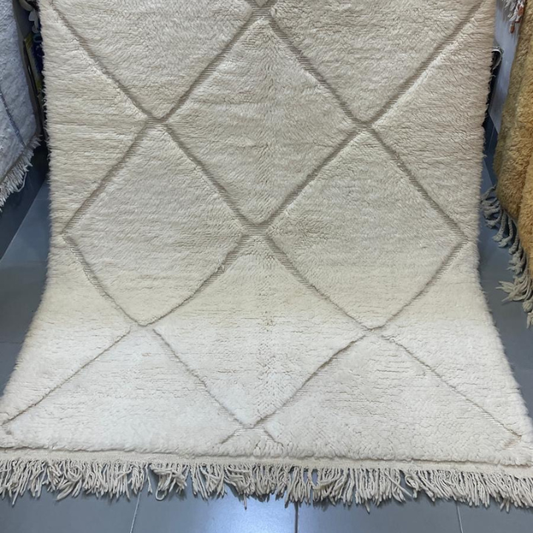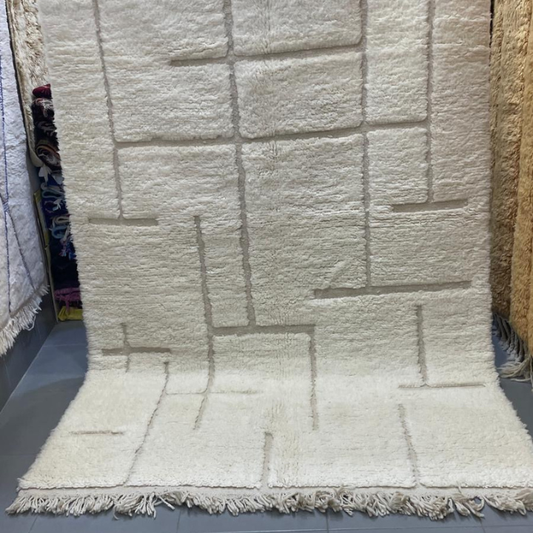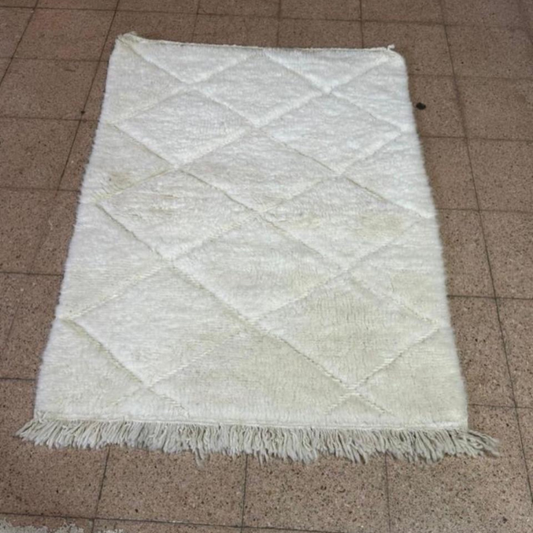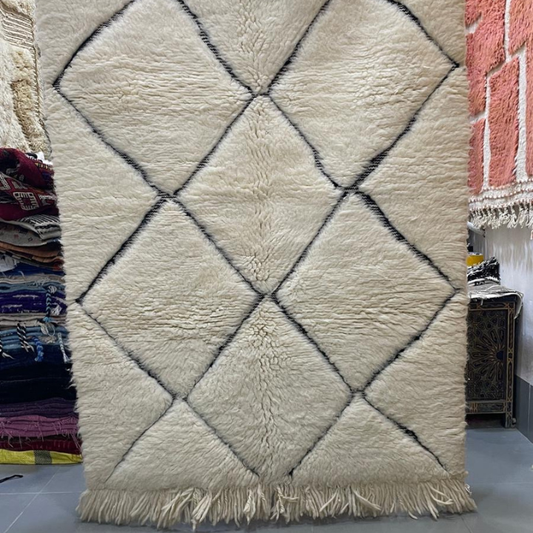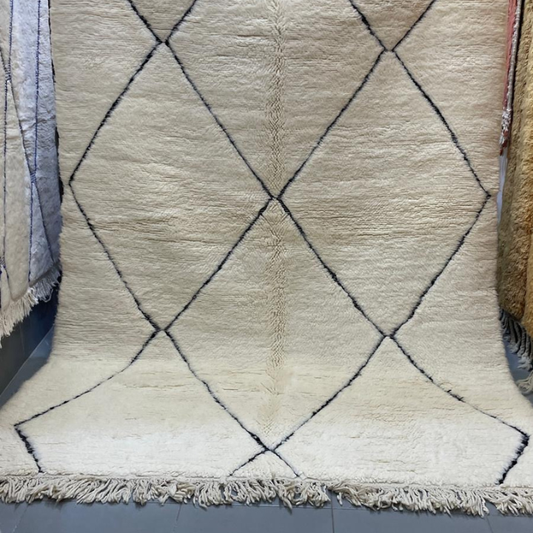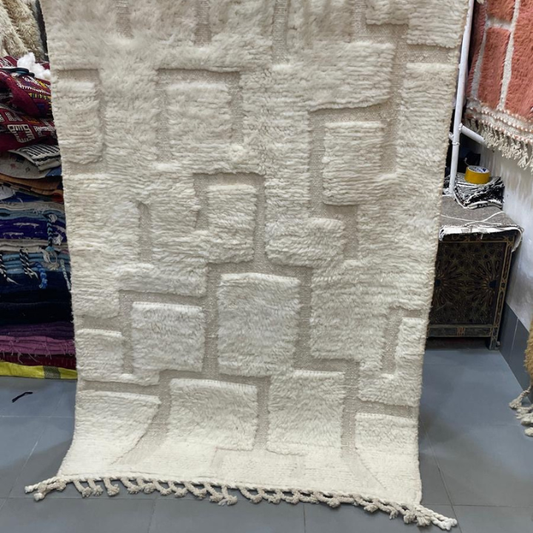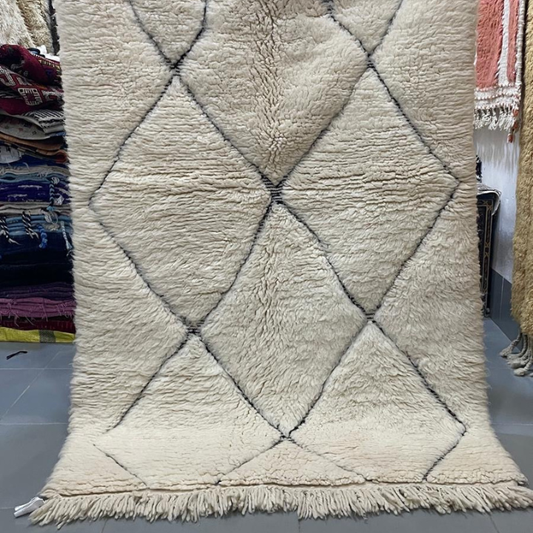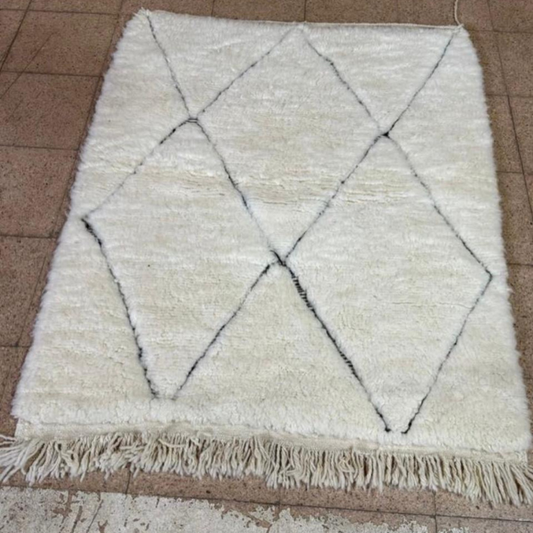Collection: Beni Ouarain rugs
The Beni Ouarain Rug: A Legacy from the Middle Atlas Mountains
The Beni Ouarain rug is a true emblem of Moroccan Berber craftsmanship, deeply rooted in the mountainous regions of the Middle Atlas. Its name is inseparable from the Berber Beni Ouarain tribe — a confederation of seventeen tribes who, over generations, have meticulously preserved and passed down the complex art of weaving.
This ancestral tradition, where every gesture is imbued with knowledge and patience, is passed from mother to daughter, making each rug far more than a decorative object: it is a woven story. These unique pieces silently tell tales, incorporating powerful symbols inspired by the surrounding nature, the cycle of life, motherhood, and the rich Berber spirituality.
-
Tapis Beni Ouarain écru motifs noirs - B112
Regular price €297,50Regular price€595,00Sale price €297,50Sale -
Tapis Beni Ouarain - Cloud
Regular price €394,00Regular price -
Tapis Beni Ouarain - Aska
Regular price €1.252,00Regular price -
Tapis Beni Ouarain - Nila
Regular price €1.252,00Regular price -
Tapis Beni Ouarain - Raya
Regular price €734,00Regular price -
Tapis Beni Ouarain - Safia
Regular price €734,00Regular price -
Tapis Beni Ouarain - Graph
Regular price €839,00Regular price -
Tapis Beni Ouarain - Honey
Regular price €397,00Regular price -
Tapis Beni Ouarain - Cosy
Regular price €344,00Regular price -
Tapis Beni Ouarain - Salma
Regular price €734,00Regular price -
Tapis Beni Ouarain - Éline
Regular price €734,00Regular price -
Tapis Beni Ouarain - Mellow
Regular price €344,00Regular price -
Tapis Beni Ouarain - Fluffy
Regular price €394,00Regular price -
Tapis Beni Ouarain - Tender
Regular price €397,00Regular price -

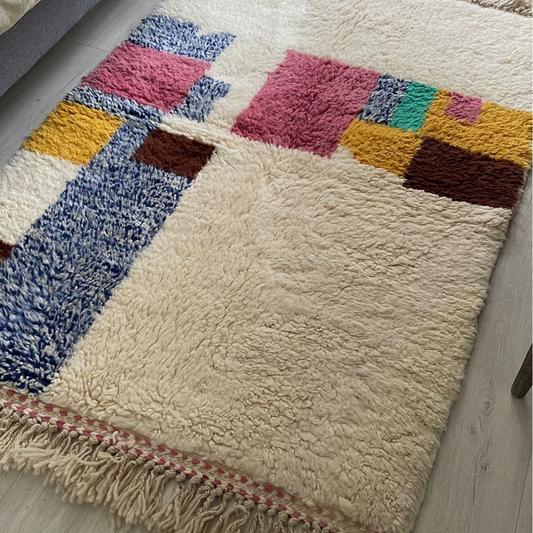 Sold out
Sold outBeni Ouarain No. B119
5.0 / 5.0
(1) 1 total reviews
Regular price €199,00Regular price€399,00Sale price €199,00Sold out -

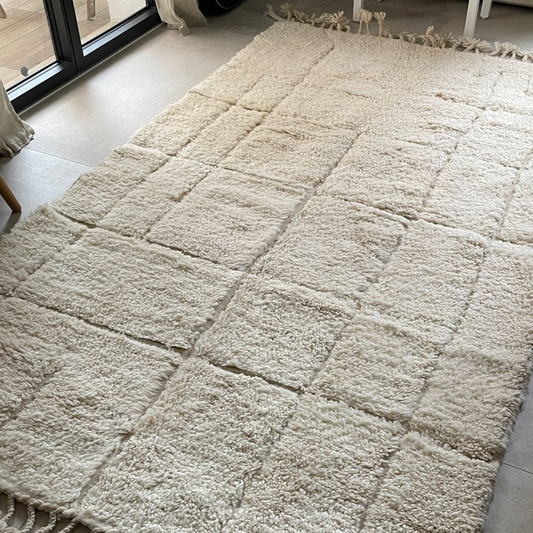 Sold out
Sold outTapis Beni Ouarain écru - B114
5.0 / 5.0
(1) 1 total reviews
Regular price €595,00Regular price
The Beni Ouarain rug: The signature of authentic know-how
The Beni Ouarain rug is distinguished by intrinsic characteristics which testify to its authenticity and the quality of its manufacture:
Material: The soul of these rugs lies in their composition: 100% virgin sheep's wool. This wool generally comes from the rustic Berber breed "Marmoucha", renowned for its exceptional softness and unfailing robustness.
Thickness: The generous wool used gives the rug a remarkable thickness, generally varying between 2.5 and 3 centimeters. This density creates an incomparable feeling of softness and comfort underfoot.
Patterns: The designs that adorn Beni Ouarain rugs are primarily geometric in nature. The most iconic motifs are black diamonds that stand out against an ecru or cream background. However, evolving tastes and influences have seen the emergence of modern variations, incorporating delicate polka dots, freer and more abstract patterns, or contemporary color palettes such as deep blue, powder pink, or warm terracotta.
Colors: The traditional color palette revolves around neutral, timeless tones: pure white, soft cream, and deep black. However, the embrace of modern influences has enriched this palette, offering vibrant multicolor versions or more contemporary interpretations.
Weaving: Each Beni Ouarain rug is the result of meticulous work, knotted entirely by hand. This artisanal technique guarantees not only the durability and exceptional quality of each piece, but also its unique and inimitable character. Subtle variations and imperfections are a testament to the craftsman's hand and give the rug a true soul.
Collapsible content
What is the historical origin of Beni Ouarain rugs?
They originate from the Middle Atlas Mountains in Morocco and have been woven by the Beni Ouarain confederation of Berber tribes for generations.
How do Berber women pass on their know-how?
The know-how of weaving is an oral and practical tradition, passed down from mother to daughter within Berber families.
What are the most popular patterns on Beni Ouarain rugs?
The most popular patterns are black diamonds on an ecru or cream background, but lines, chevrons and traditional Berber symbols are also found.
What is the difference between a Beni Ouarain rug and another type of Berber rug?
The Beni Ouarain is distinguished by its thick wool, often simple geometric patterns (mainly diamonds), traditionally neutral colors, and soft appearance. Other Berber rugs may feature more complex patterns, brighter colors, and different weaving techniques depending on the region and tribe.
